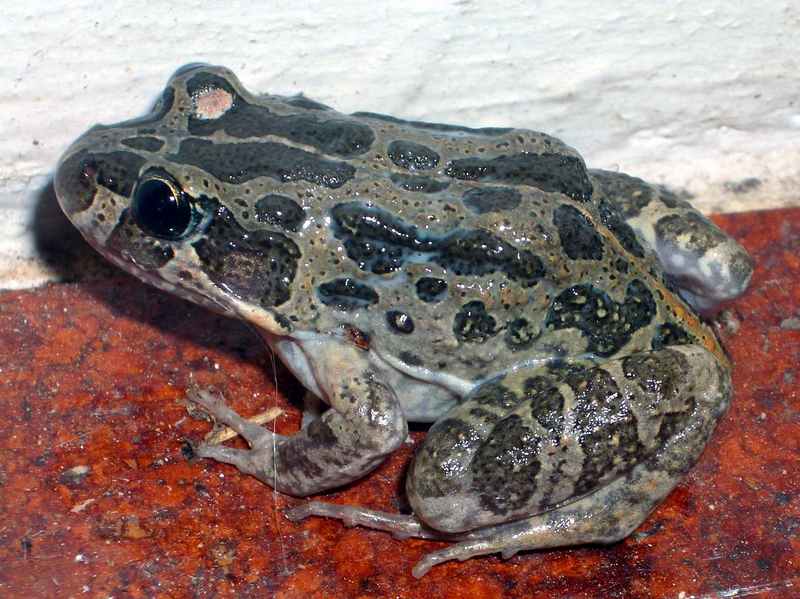|
| 질의: description | 결과: 9586번째/10150 | |
Marbled Frog (Limnodynastes convexiusculus) - Wiki
| 제목: | Marbled Frog (Limnodynastes convexiusculus) - Wiki
| |

| 해상도: 1624x1216
파일크기: 269293 Bytes
촬영일: 2006:11:12 22:26:16
사진기: PENTAX Optio S4i (PENTAX Corporation )
F number: f/2.6
Exposure: 1/60 sec
Focal Length: 1460/100
등록시간: 2007:11:13 10:48:51
|
Marbled Frog
From Wikipedia, the free encyclopedia
[Photo] Marbled Frog (Limnodynastes convexiusculus), the west of Cooktown, Australia. Date 12 November 2006. Photo by John Hill (http://en.wikipedia.org/wiki/User:John_Hill). Copyright (C) 2006 John Hill
Permission is granted to copy, distribute and/or modify this document under the terms of the GNU Free Documentation License, Version 1.2 or any later version published by the Free Software Foundation; with no Invariant Sections, no Front-Cover Texts, and no Back-Cover Texts. A copy of the license is included in the section entitled "GNU Free Documentation License". |
The Marbled Frog or Spotted Marshfrog (Limnodynastes convexiusculus) is a species of ground-dwelling frog native to northern and north-eastern Australia, and southern New Guinea.
Physical description
Adult Marbled Frogs reach about 4.5 centimetres (1.8 in) in length, sometimes larger. Toes are long and unwebbed. Grey to light brown on back with numerous prominent darker blotches. The belly is white. Males have a yellowish throat and numerous small sharp black spines on their backs. When disturbed their skin excretes large amounts of mucous.
Ecology and behaviour
The Marbled Frog tends to be solitary inhabiting thick ground vegetation and is more often heard than seen. Males often call from hidden sites, usually partly submerged beneath vegetation. Its call has been described as "a rapid series of uk uk uks". Eggs are laid in a floating foam nest under vegetation and are small and brown. Tadpoles reach 7 centimetres (2.8 in) in length.
The Marbled Frog inhabits waterholes and pools in open grassland and woodland.
http://en.wikipedia.org/wiki/Marbled_Frog
| The text in this page is based on the copyrighted Wikipedia article shown in above URL. It is used under the GNU Free Documentation License. You may redistribute it, verbatim or modified, providing that you comply with the terms of the GFDL. |
|
^o^
동물그림창고 똑똑전화 누리집
^o^
|
|

